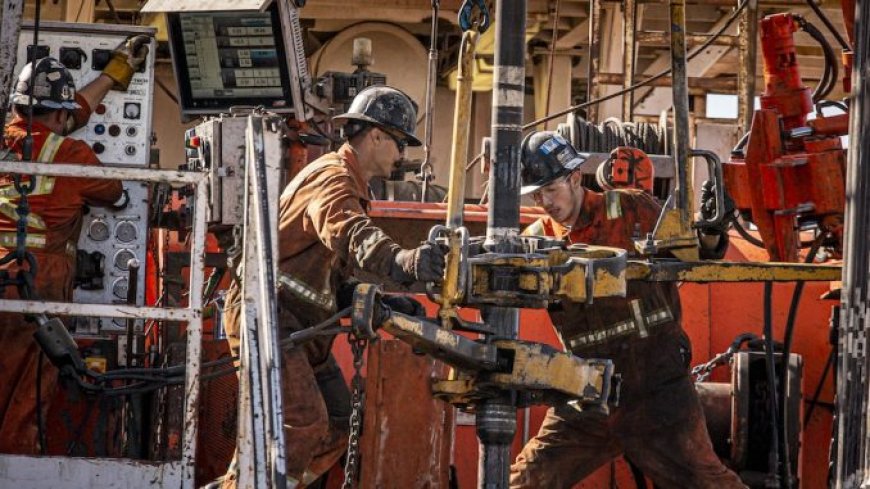DEEP Earth Energy Corp.'s Geothermal Project: Innovative Mitigation Measures for Environmental Impact
Explore DEEP Earth Energy Corp.'s geothermal project and its comprehensive mitigation measures aimed at addressing environmental impacts identified in the environmental impact assessment.

Transforming Geothermal Energy: DEEP Earth Energy Corp. Partners with SLB to Pioneer Canada’s First Next-Generation Project
In a significant advancement for renewable energy in Canada, Saskatoon-based DEEP Earth Energy Corp. has announced a groundbreaking partnership with SLB (formerly known as Schlumberger Ltd.) to develop the country’s first next-generation geothermal project. This collaboration aims to harness geothermal energy, a largely untapped underground resource, and establish a model for sustainable, emissions-free power generation.
A New Era for Geothermal Energy
The International Energy Agency (IEA) has projected a monumental increase in global geothermal generating capacity, forecasting growth from a mere 15 gigawatts today to a staggering 800 gigawatts by 2050. This shift is expected to be driven by sustained investments in technology, which are poised to significantly lower project costs. Innovations are already taking root in the sector, with estimates indicating that costs could decrease by as much as 80% by 2035, bringing the price of geothermal energy down to around $50 per megawatt-hour. At this competitive cost, geothermal energy could become the cheapest source of dispatchable renewable energy, outperforming traditional power sources like hydro and nuclear, and standing toe-to-toe with wind and solar energy.
As Peter Massie and Emily Smejkal from the Cascade Institute pointed out, the rapid advancements in geothermal technology make the vision of harnessing geothermal power globally more feasible than ever. They emphasized that “innovation is happening at a rate perhaps exceeding that with any other power technology today.”
The Vision and Goals of DEEP and SLB
The first phase of the DEEP project near Estevan, Saskatchewan, is projected to generate an initial five megawatts of power by 2026, eventually expanding to 30 megawatts as construction progresses. With a staged build plan, the project aims to reach approximately 180 megawatts of capacity in the long run, signaling a shift towards a more robust geothermal power infrastructure in Canada.
Kirsten Marcia, President and CEO of DEEP, expressed her enthusiasm for this collaboration, noting, “We are thrilled to welcome SLB as a key partner in this transformative project. By joining forces, we are developing our asset in a streamlined fashion, combining the best of subsurface and surface technologies while maximizing efficiencies, operations, and ultimately, power output.” This partnership not only represents a technical leap but also symbolizes a strong commitment to reducing greenhouse gas emissions and securing local energy resources for the future.
In a broader context, DEEP’s project plans to serve as a blueprint for future commercial geothermal projects across Canada. This goal is particularly pertinent given the increasing urgency to transition to renewable energy sources amid the climate crisis. Irlan Amir, SLB’s Vice President of Renewables and Energy Efficiency, highlighted this commitment, stating, “This collaboration with DEEP reflects our commitment to broadening the adoption of geothermal by reducing project risk and accelerating the time to first power.”
Innovative Approaches to Geothermal Energy
One of the pivotal strategies employed by DEEP is leveraging horizontal drilling technology, commonly used in the oil and gas sector, to increase power output. Traditional geothermal technology has long been regarded as mature, with its roots tracing back to early installations in Italy in the early 20th century. The DEEP project, however, is utilizing modern techniques to enhance the porosity of the underground rock formations, thus optimizing the extraction of geothermal energy.
Despite concerns over the geological implications associated with drilling—especially in areas prone to seismic activity—Massie emphasized the importance of responsible practices. “Whenever you’re drilling, you want to make sure you’re doing it responsibly,” he stated. “There are regulatory systems in place to make sure these are monitored and detected.” This regulatory oversight aims to ensure the safety and sustainability of geothermal projects as they expand.
Workforce Implications and Economic Impact
The partnership with SLB also brings economic benefits, particularly in job creation. The skills required in geothermal energy are largely transferrable from the oil and gas industry, which means workers from that sector can transition into new roles as geothermal projects develop. Massie noted that “when I talk to people in the geothermal industry, it would be no exaggeration to say that 80 or 90% of them are transplants from the oil and gas industry.” The IEA estimates that about 80% of the skills required in geothermal jobs can be easily adapted from oil and gas roles, providing an avenue for the workforce to pivot toward cleaner energy solutions.
The Broader Picture: Canada’s Role in Geothermal Development
The potential of geothermal energy in Canada is immense, yet it has remained underutilized compared to wind and solar. The Cascade Institute has urged Canada to “dig deep” into new geothermal technologies, highlighting the nation’s opportunity to become a leader in this emerging field. As indicated in their opinion piece, “In 2025, Canada must decide whether to lead or follow in this arena.” This sentiment encapsulates the urgency for the country to act swiftly to capitalize on recent breakthroughs.
DEEP’s initiatives not only aim to mitigate greenhouse gas emissions but also represent a pivotal step toward achieving Canada’s climate goals and enhancing energy security. By utilizing waste heat from geothermal operations for other applications, such as the recently announced plans to build Canada’s “greenest greenhouse” in partnership with Oppy, DEEP is positioning itself at the forefront of sustainable energy solutions.
Conclusion
As DEEP Earth Energy Corp. embarks on its journey to reshape the geothermal landscape in Canada, its partnership with SLB stands as a beacon of innovation and sustainability. The ongoing advancements in geothermal technology, coupled with strong governmental and industry support, provide the perfect environment for this clean energy source to flourish. If successful, DEEP’s project could not only transform energy generation in Canada but also set a precedent for geothermal development worldwide, contributing significantly to the global push for net-zero emissions and a more sustainable future.
 Kinyarwanda
Kinyarwanda
 English
English









































































